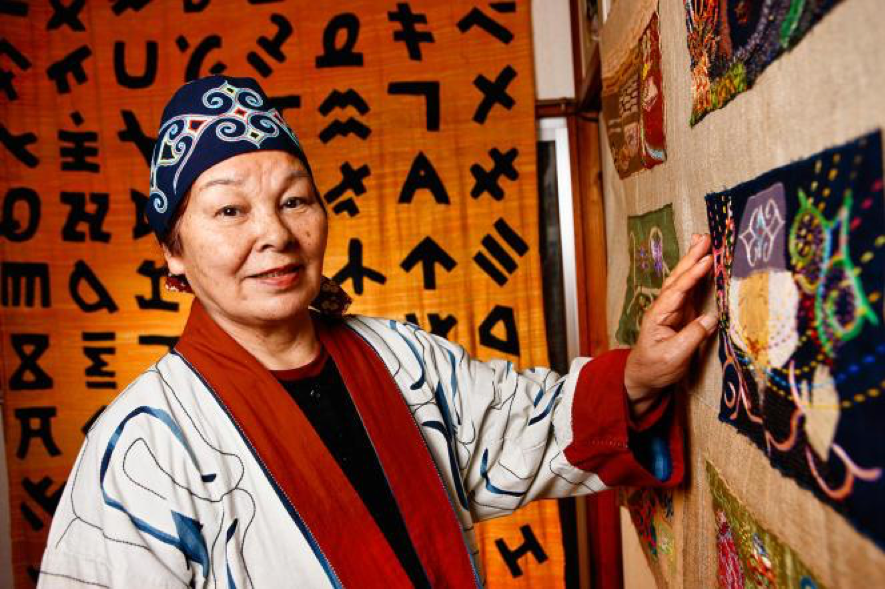A Perspective from Le Monde: The Ainu people of Japan, a tried and tested minority

The opening of a museum and the worldwide success of the manga inspired by their culture have not appeased their resentment: colonised by the Japanese, the Ainu are still mostly victims of discrimination.
Philippe Mesmer, 10 October 2022 (translated by Meindert Boersma, originally published in Le Monde: https://www.lemonde.fr/m-le-mag/article/2022/10/10/le-peuple-ainou-au-japon-une-minorite-eprouvee_6145109_4500055.html)
Editor's Note: This article has been translated and posted on the CEMiPoS website with the author's permission. The following works contain further explanation of context mentioned in this article. For more information about the 1875 forced relocation of Karafuto Ainu, refer to "Settler colonialism and forced relocation of Indigenous Peoples with a special reference to the Karafuto Ainu". For more information about Ainu cultural commodification, tourism, and the opening of Upopoy, refer to "Critiquing the Colonialist Origins of the New National Museum Upopoy" and "CEMiPoS Statement on the Opening of the Upopoy".
“We, the Ainu, know how to interpret our dreams. A raven in a dream guides us by its look or its caw.” Artist, poet and activist for the rights of this ethnic minority from Japan, Shizue Ukaji carries on the Ainu traditions, intimately linked to nature.
In her small house in the village of Shiraoi, southwest of Hokkaido, the large island of northern Japan, the energetic eighty-year-old protects herself from evil spirits with clumps of mistletoe, keeps herself fit with infusions of grated bark from the cork tree of the river Amur and reads the messages of the dream crow, the divine messenger of the Ainu pantheon – dominated by the bear, “god of the mountain”, the owl protecting the villages and the salmon nurturing them.
“Our culture is not just songs and dances. The essence of the traditions passed down from generation to generation is in everyday life, in the kitchen,” asserts Shizue Ukaji, who is very hostile to the recuperation of their culture for tourist and commercial purposes. The immense success of the manga Golden Kamuy (kamuy means “deity” in Ainu), whose fourth season of the animated version will be available on 4 October for streaming, is an example.
Shizue Ukaji's criticisms are also, and perhaps above all, aimed at the Upopoy Museum – “a place without a soul”, according to her – inaugurated in July 2020, a few hundred metres from her home. The aim of this “national Ainu museum” is to “revive and further develop Ainu culture”, says its director, Shiro Sasaki, a former researcher at the renowned Osaka Museum of Ethnology.
The dark building, set in the grass along Lake Poroto against the massive silhouette of the Tarumae volcano, houses a unique hall detailing Ainu craftsmanship and spirituality, where one can wander around in a circular fashion. But it does not convince the members of the minority.
“It is far from reflecting the Ainu's attachment to nature, which they have preserved for future generations,” says Ryoko Tahara, president of the Menoko Mosmos (“Wake up, Ainu women”) association. Above all, it avoids dealing with the wounds inflicted over time on these people, whose arrival from Siberia certainly predates the Jōmon era (14,000-300 BC).
The Ainu (from the word anyu: “human”) have long been spread over a vast territory covering Sakhalin (present-day Russia), the Kuril Islands, Hokkaido and the northern part of the island of Honshu. Animists, living from hunting and gathering, the Ainu are first mentioned in Japanese chronicles in the 8th century. Gradually pushed northwards to the island of Hokkaido, they fell under Japanese rule in 1789.
During the modernisation of the Meiji era (1868-1912), which was accompanied by the “Japanisation” of Hokkaido, Tokyo pushed for the development of the island through the massive settling of “pioneers”. The Ainu were then “encouraged” to learn Japanese. Salmon fishing, the basis of their culture, was banned. The law of 1899, known as the “former natives protection law” dispossessed them of their land and forced their integration by converting them to agriculture.
A year after ratifying the UN Declaration on the Rights Indigenous Peoples in 2007, which obliges it to recognise and protect the rights of indigenous peoples, Japan finally recognised that the Ainu “have their own language, religion and culture”. In 2019, a law replaced the controversial 1899 text, promising to “realise a society that will respect the dignity” of the minority.
Discrimination and poverty
But there is no action to address the persistent poverty and discrimination they face. According to a 2016 survey by the official Hokkaido Ainu Association, 23.2 per cent of the estimated 20,000 Ainu say they are discriminated against. Even today, many still hide their identity. “At my first wedding, I didn't say I was Ainu,” recalls Yoko Sasaki, who runs the Ainu community centre in Sapporo. One day my mother-in-law found out. She said, “So, well, you're an Ainu,” in such a tone of voice that I left, for good.
The Ainu are waiting for redress. In 2019, the Minister of Education, Kōichi Hagiuda, refused to acknowledge past mistakes: “There were differences in values between the indigenous people and the Japanese pioneers. I wonder if it is good to talk about discrimination.”
“The government never talks about the colonisation of Hokkaido, but always about the contribution of Japanese pioneers to the modernisation of Japan,” says Hiroshi Maruyama, founder of the Centre for Environmental and Minority Policy Studies (CEMiPoS). “Self-determination and land rights are crucial to the identity of indigenous peoples, but the government shows no intention of granting them,” says Takeshi Higashimura, an Ainu specialist at Nagoya University.
The Ainu nation, based in Urahoro in eastern Hokkaido, filed a lawsuit in 2020 demanding that the government restore the right to fish salmon in the local Urahorotokachi River for commercial purposes. “We must continue. I want the Ainu to regain their former life, their dignity and a decent life,” insists Shizue Ukaji. The road ahead seems long.